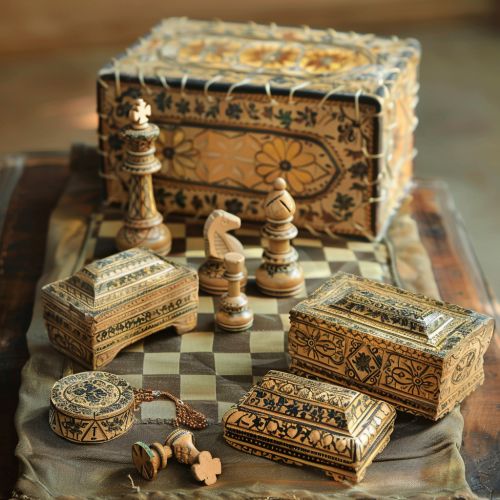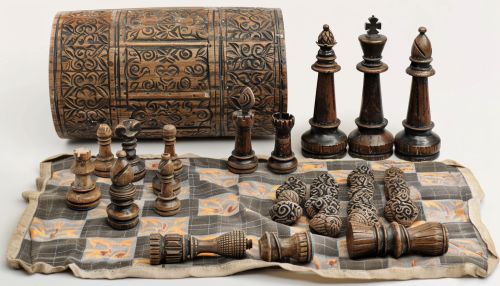Shatranj
History
Shatranj is an ancient board game, believed to be a precursor to modern chess. The game originated in India and was transmitted to the Islamic world in the 7th century. The rules of Shatranj are quite different from those of the modern chess, and the pieces have different movements and names.


The earliest references to Shatranj are found in Persian literature from the 6th century, where it is referred to as "chatrang". The game was likely introduced to the Islamic world following the Islamic conquest of Persia in the 7th century. The game was subsequently modified and adapted by the Arabs, who renamed it "Shatranj".
Gameplay
The game of Shatranj is played on a square board, divided into 64 squares of alternating colors. Each player begins with a set of 16 pieces: one king, one general (equivalent to the queen in modern chess), two elephants (equivalent to bishops), two horses (equivalent to knights), two chariots (equivalent to rooks), and eight soldiers (equivalent to pawns).
The objective of the game is to checkmate the opponent's king. This is achieved by placing the king under threat of capture ('check') in such a way that there is no legal move for the opponent to remove the threat of capture on the next move.
Pieces and their movements
The pieces in Shatranj have different movements and names compared to modern chess. The king, called "Shah" in Shatranj, moves one square in any direction, just like in modern chess. The general, called "Firzan", moves one square diagonally, which is a more limited movement than the queen in modern chess.
The elephant, called "Pil", moves two squares diagonally, but can jump over a piece between its starting and ending squares. The horse, called "Faras", moves like the knight in modern chess, i.e., it can jump over other pieces and its move is composed of one straight and one diagonal move.
The chariot, called "Rukh", moves like the rook in modern chess, i.e., it can move any number of squares along a row or column. The soldier, called "Baidaq", moves and captures one square forward, but unlike the pawn in modern chess, it does not have the option of moving two squares on its first move, nor can it promote to another piece when it reaches the last rank.
Strategy and tactics
The strategy and tactics in Shatranj are quite different from those in modern chess due to the different movements of the pieces. The limited movement of the Firzan and the Pil makes them less powerful than the queen and bishops in modern chess, which in turn affects the overall dynamics of the game.
The game is slower and more strategic, with players often taking several moves to position their pieces for an attack. The concept of "zugzwang", where a player is forced to make a disadvantageous move, is also more prevalent in Shatranj due to the limited mobility of the pieces.
Cultural significance
Shatranj was not just a game, but also a cultural and intellectual symbol in the Islamic world. It was considered one of the "four skills" that a cultured gentleman should possess, along with calligraphy, poetry, and horsemanship.
The game was often used as a metaphor in Persian and Arabic literature, and many stories and fables were written around it. One of the most famous of these is the "Tale of the Chessboard", from the One Thousand and One Nights, where the invention of the game is attributed to a wise vazir who uses it to teach his king about the nature of life and power.
Decline and legacy
The game of Shatranj began to decline in popularity in the 10th century, with the advent of more dynamic chess variants in India and the Far East. However, it left a lasting legacy on the world of board games.
The game is considered a precursor to modern chess, and many of its rules and pieces are still recognizable in the modern game. The game also influenced other board games in the Islamic world, such as backgammon and checkers.
